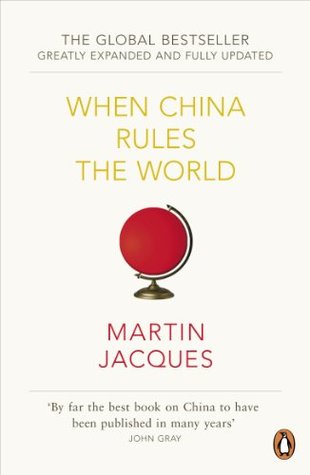More on this book
Community
Kindle Notes & Highlights
From experiencing life on the land, where relatively little changes from one year to the next, or from one generation to another, industrialization marks a tumultuous transformation in people’s circumstances, where uncertainty replaces predictability, the future can no longer be viewed or predicted in terms of the past, and where people are required to look forwards rather than backwards.
For developing countries in particular, the ability to deliver economic growth, maintain ethnic harmony (in the case of multi-ethnic societies), limit the amount of corruption, and sustain order and stability, are equally, if not rather more, important considerations than democracy.
There are certainly fundamental differences between the Chinese approach and the Washington Consensus, with the Chinese model both markedly less ideological and also highly experimental and pragmatic in approach, in a manner not dissimilar from that of the Asian tigers, with a willingness to adopt that which has worked and abandon that which has not.
A continent which was once intimate with most of the world has retreated into an intellectual and psychological bunker in which it has become increasingly unaware of and out of touch with the way in which that world is changing. In consequence, the European mentality has become steadily more defensive.
In the longer term, as Chinese companies relentlessly climb the technology ladder, the US economy will face ever-widening competition from Chinese goods, no longer just at the low-value end, but also increasingly for high value-added products as well, just as happened earlier with Japanese and Korean firms.178 In that process, the proportion of losers is likely to increase rapidly, as will be the case in Europe too. Such a development could further undermine the present shrinking consensus in support of free-trade globalization and strengthen support for protectionism, with the main target
...more
The fact that the value added in China (30 per cent or much less as a rule) is only a small proportion of the total value added because of the extremely low cost of Chinese labour means that any attempt to impose sanctions on Chinese exports, for example, would inflict far greater economic harm on the many other countries involved in the production process, especially those in East Asia, than on China itself.
What will the world look like in the much longer term, in twenty, or even fifty, years’ time? The future, of course, is unknowable but in this chapter I will try to tease out what might be some of its more salient features. Such an approach, needless to say, is entirely speculative, resting on a range of assumptions some of which will inevitably prove to have been wrong.
While the West remained relatively unchallenged, as it has been for the best part of two centuries, the price of such arrogance has overwhelmingly been paid by others, as they were obliged to take heed of Western demands; but when the West comes under serious challenge, as it increasingly will from China and others, then such a parochial mentality will only serve to increase its vulnerability, weakening its ability to learn from others and to change accordingly.
They embrace the new in the same way that a child approaches a computer or a Nintendo games console, with confidence and expectancy – in contrast to European societies, which are more wary, even fearful, of the new, in the manner of an adult presented with an unfamiliar technological gadget.
One of the underlying strengths of the United States is the quality of its Ivy League universities, but in the long run the school system is far more important because it is responsible for educating the whole population rather than a tiny elite.
The first is ‘state competence’, a concern which has virtually disappeared from the Western agenda over the last 30 years in the face of the neo-liberal revolution and its overwhelming preoccupation with the market and privatization. A growing anti-state mentality has diverted and distracted attention from the need for a state that is competent and able to deliver. The second concerns the strategic capacity of the state, its ability to think and act in ways that address the long term. This is one of the great strengths of the Chinese state.


